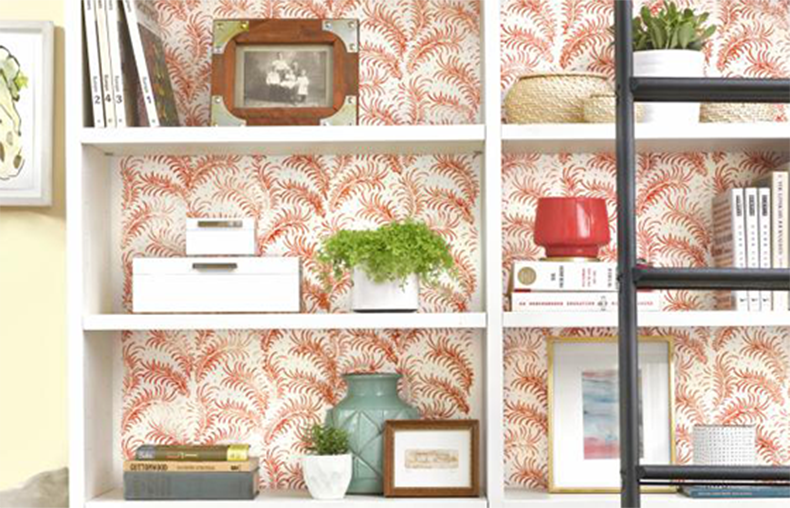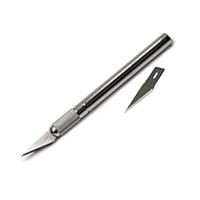Project details
Skill
Cost
Estimated Time
We may be compensated if you purchase through links on our website. Our team is committed to delivering honest, objective, and independent reviews on home products and services.
Rolling on a painted pattern is a great way to add visual interest and texture to your walls without the hassle of traditional wallpaper. This technique is customizable and lets you transform any room in your home, including bathrooms. By using a patterned paint roller, you can achieve professional-looking results with minimal effort. In this guide, we’ll walk you through the process of rolling on a painted pattern, from selecting your materials to perfecting your technique.
Materials and Tools Needed for Rolling on a Painted Pattern
These are the materials and tools we recommend for this project:
- Sherwin-Williams Emerald® Interior Acrylic Latex Paint in Matte Finish (for a base coat)
- Sherwin-Williams Emerald® Interior Acrylic Latex Paint in Semigloss Finish (for the pattern)
- Drop cloths
- Painter’s tape
- Pattern applicator
- Pattern roller
- Roller tray and liners
- Sandpaper (for surface preparation)
- 2 1/2-inch paintbrush (for cutting in around edges and corners)
- Ladder or step stool (for reaching higher areas safely)
- Level (to ensure straight lines when starting your pattern)
- Marker (for marking the roller as described in Step 1)
- Measuring tape (for planning your pattern layout)
- X-Acto blade (for trimming excess pattern or touching up edges)
Preparing the Wall for Painting the Pattern
The first step is to add a base coat of Sherwin-Williams Emerald® Interior Acrylic Latex Paint in matte in Pure White SW 7005 to the wall you’ll be painting. For the pattern, we selected a semigloss finish in Copper Wire SW 7707, which we applied using a cut-rubber design roller. The design inscribed on the roller is called Quills from Rollerwall.
Steps for Rolling On a Painted Pattern
Make sure the wall surface is clean, dry, and properly primed. Choose a pattern and color scheme that complements your room’s decor.
Step 1: Mark the Design Roller
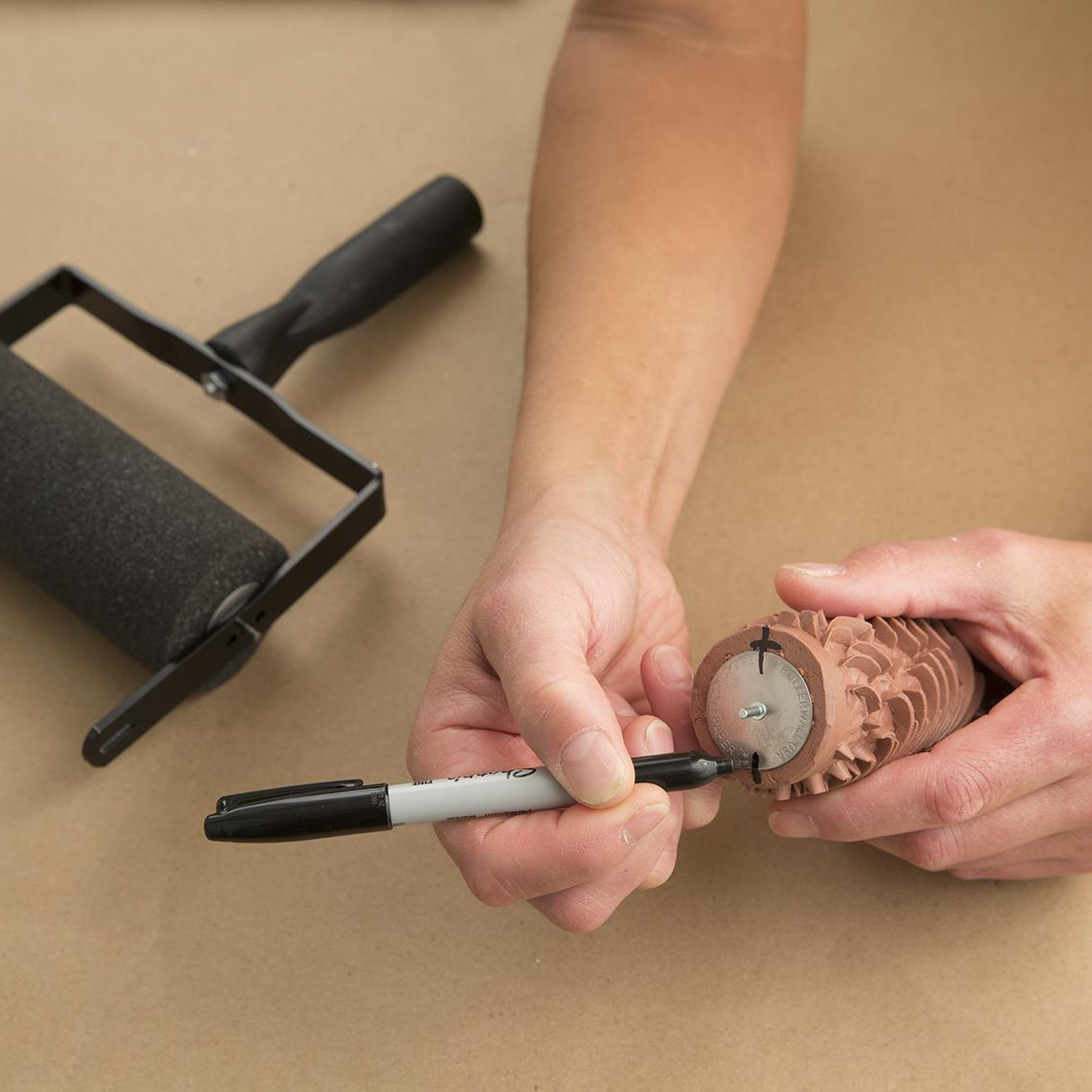
To achieve wallpaper-like repeats, mark the roller with a + at one point and a − directly across from it. You’ll start the first row with the + up and the next with the − up. Insert both rollers in the frame; you should have a frictionless close fit. This marking system ensures consistent pattern alignment as you work your way across the wall.
Step 2: Load the Paint
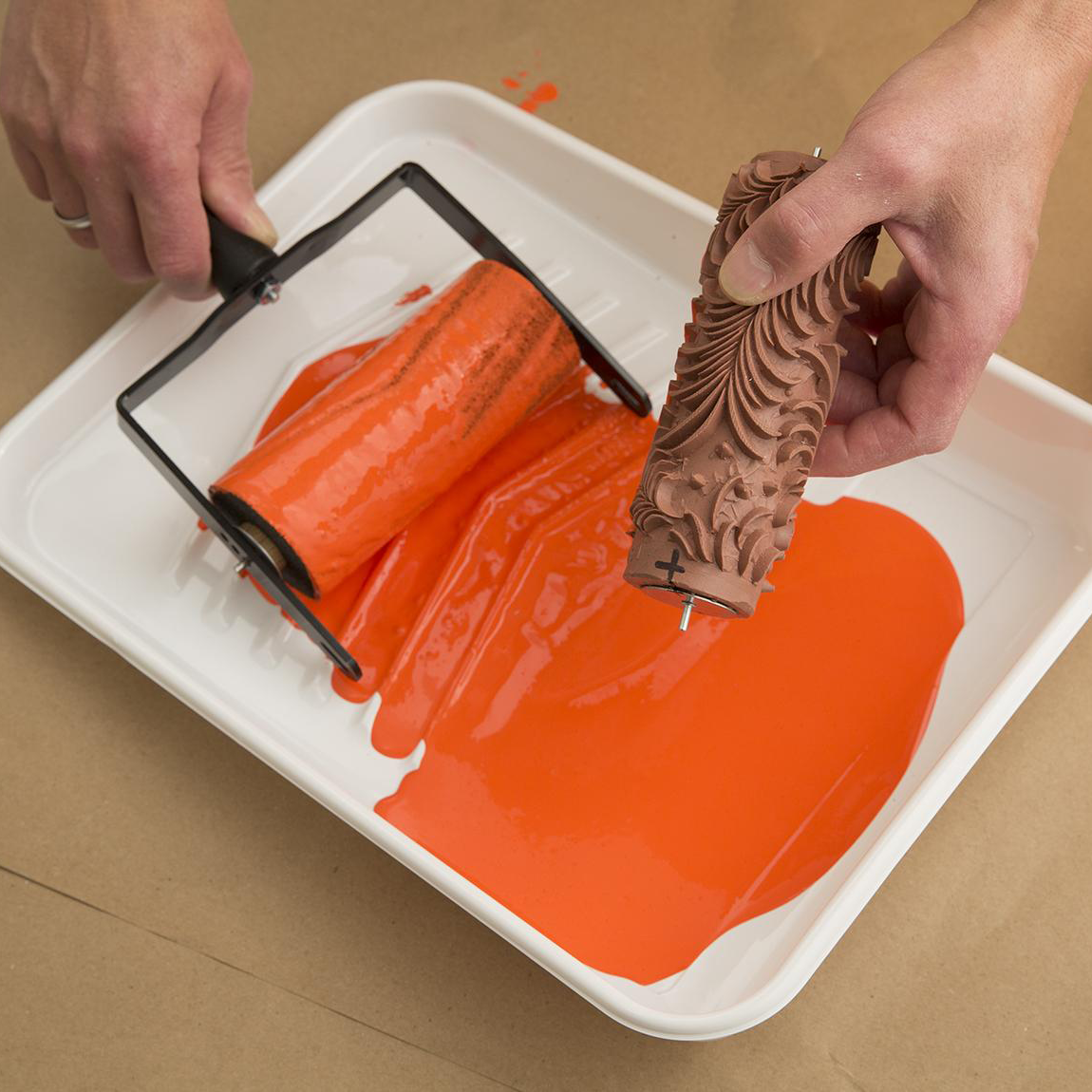
Fill the tray with latex paint in a semi-gloss finish. Remove the design roller and run the foam roller through the paint. Make sure it’s covered completely. Roll it on paper to remove excess paint. Now, mount the design roller and roll it on paper to make sure it’s right-side up. This step will help you achieve even paint distribution and prevent drips or smears on your wall.
Step 3: Put Down the First Row
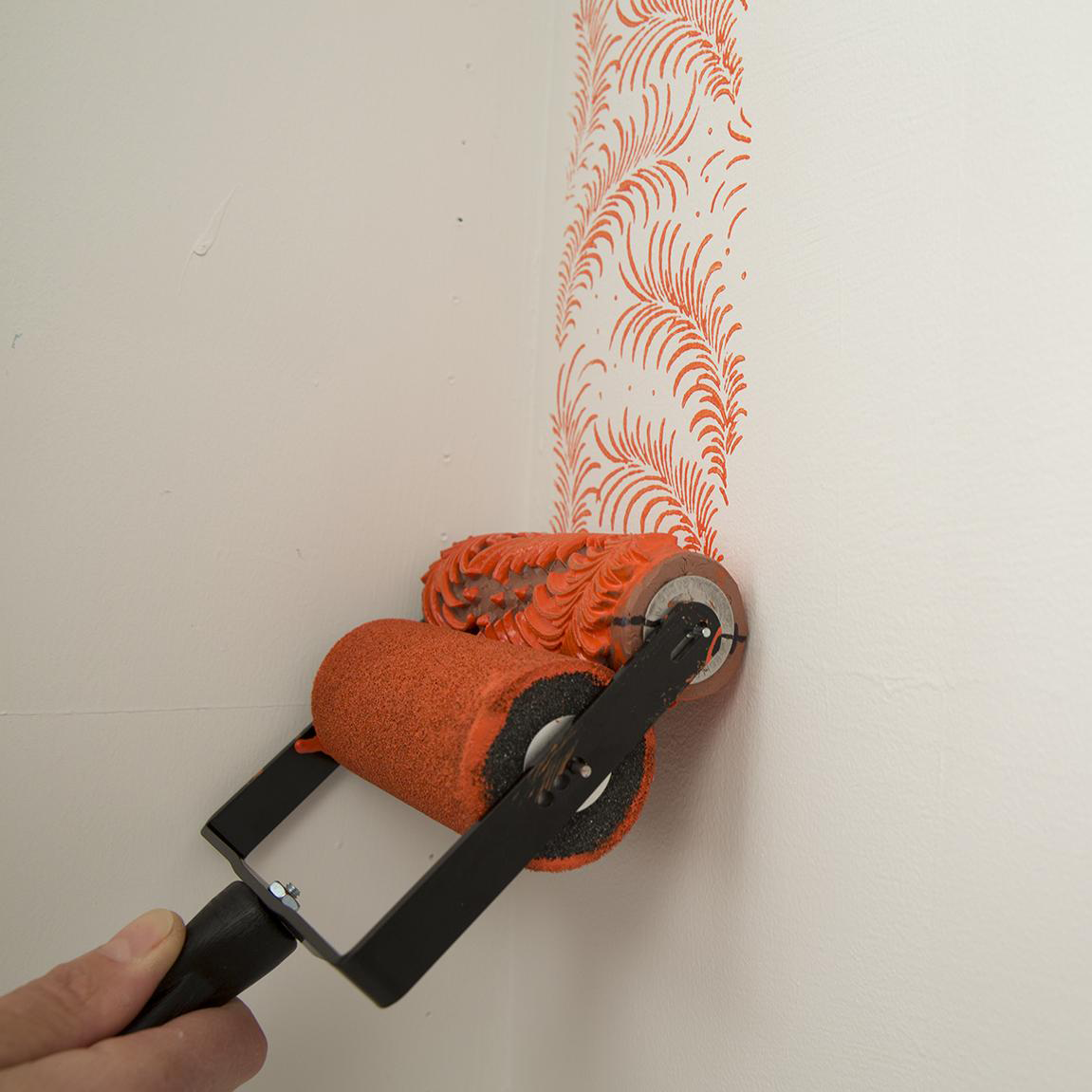
Align the + on the design roller with the top left-hand corner and move from top to bottom, angling the roller at about 45 degrees. Apply consistent pressure as you roll to get an even pattern transfer. Take your time with this first row, as it will set the foundation for the rest of your pattern.
Step 4: Make a Second Pass
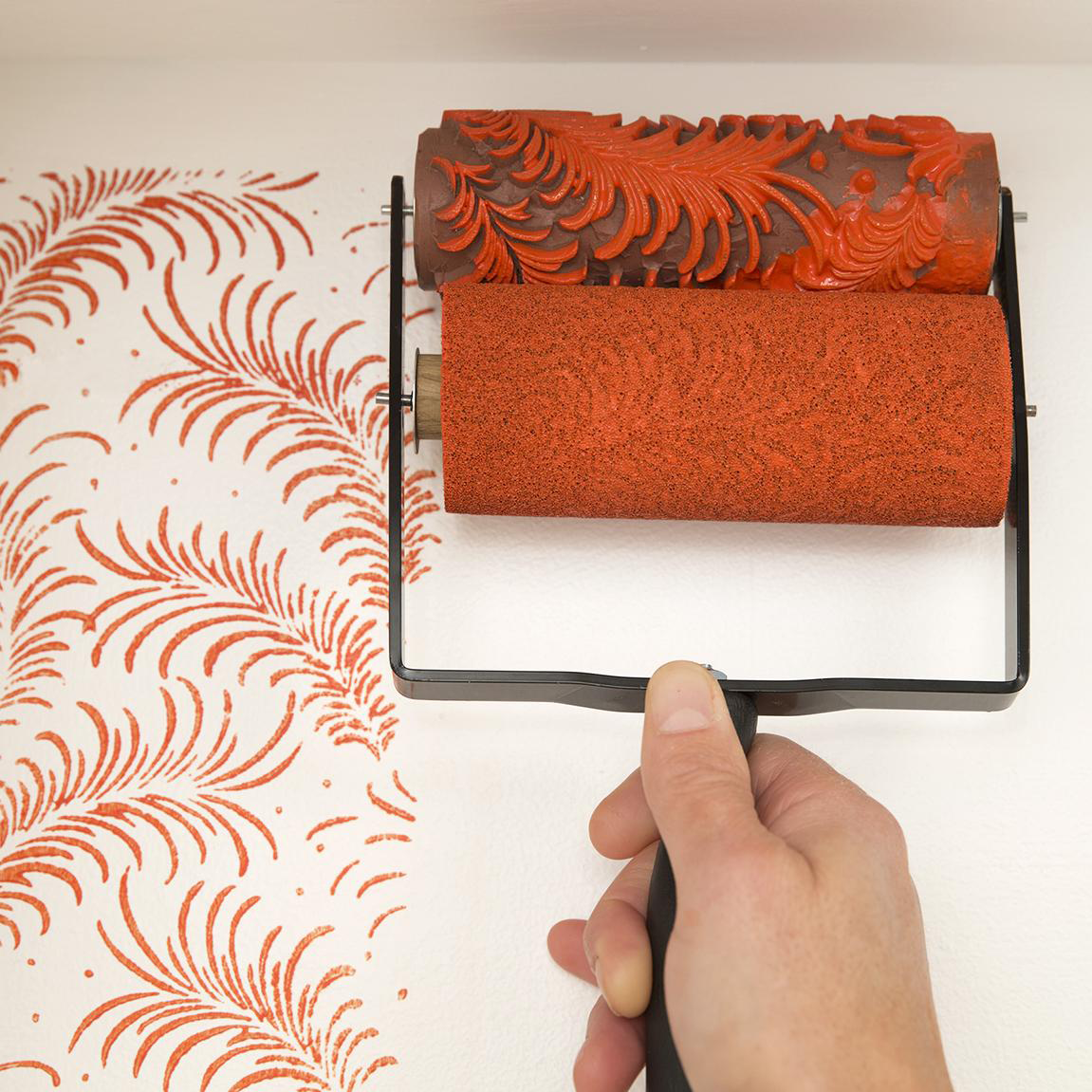
Align the next row with the − on the design roller at the top. Draw the roller down, taking care to avoid gaps between the rows. After three rows, or when the paint begins to fade, reload the paint and repeat the rest of step two. Pay close attention to the edges where rows meet to maintain a seamless pattern across the entire wall.
Tips for a Professional Finish on Your Painted Pattern Project
To elevate your painted pattern project and achieve a professional-looking result, consider these additional tips:
- Practice your technique: Before starting on the wall, practice on a large piece of cardboard to get a feel for the roller and pattern application.
- Maintain consistent pressure: Apply even pressure throughout the rolling process to achieve a uniform pattern transfer.
- Take your time: Divide your wall into manageable sections to maintain focus and precision.
- Maintain alignment: Periodically check your pattern with a level to ensure straight lines and prevent pattern drift.
- Address imperfections promptly: Keep a small brush handy to fix any flaws immediately.
Caring for Your Painted Pattern
Allow the paint to cure fully before cleaning (usually 2-4 weeks). Use a soft, damp cloth for regular dusting and cleaning — avoid harsh chemicals or abrasive cleaners that could damage the paint finish. Touch up any chips or scratches promptly to prevent further damage.
With proper care, your rolled-on painted pattern will continue to be a stunning feature in your home for years to come.
